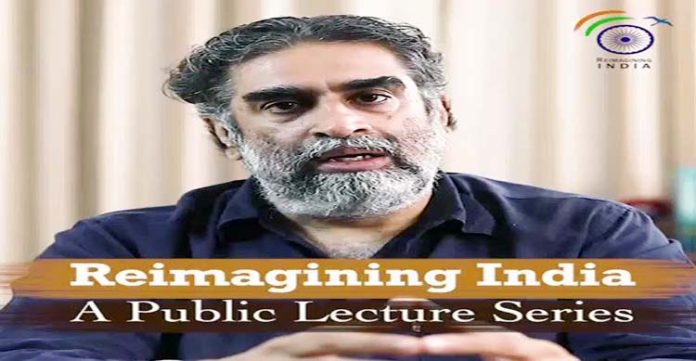Distinguishing the difference between the Media and Journalism, Hartosh Singh Bal the Political Editor, ‘The Caravan’, said, “Journalism is a craft that comes with training. It has its own norms and rigors that the practitioners must have to follow if they truly want to do their job honestly.”
He was recording his lecture on the State of the Media in India and what can be done about it with a theme “The Journalism You Deserve” as part of a public lecture series being rolled out with a theme of “Reimaging India.”
Explaining that the ‘Media’ is a superstructure that surrounds the craft called the ‘Journalism’, he said, “As in the case of doctors they need Hospitals and chains while there are owners and administrators that form the medical establishments. Similarly, Journalism is done in the superstructure called Media. So the Media is the superstructure that allows you to do journalism. Media houses consist of TV studios, Newspapers and printing presses.”
However, he said, the question is where does the problem lie? The problem that actually lies and infected journalism from its roots is the media that often lies outside the practice of the journalism itself. Again the question arises that how does the Media superstructure in India define itself?
“Let’s just look at some of the organizations that make up Indian media that include English print media like Times of India, Hindustan Times, Indian Express or you look at big Hindi newspaper such as Jagran and Bhaskar, News Channels like Times Now, Republic TV, Aaj Tak or India Today, almost all of them are owned by people drawn from one small community, one small caste. They are largely from trading castes and within these trading castes almost all the ownership is of Marwaries,” he pointed out.
This small trading caste of Marwaris, he said, have largely funded the rise and spread of what we call today a Hindutva at the beginning of the 20th century. “The printing presses published the books that uniformized Hinduism. The Geetas and the Ramayanas in published form that spread across the country were funded by the Marwari Businessman from Calcutta – the same people who actually funded the rise of the Indian media itself. This same ownership continues today,” Hartosh explained.
The impact of this ownership was that while we talk about the diversity of Media in India, he said, the control of this media lies with the very small group with a shared ideology that supports Hindutva that constitutes the country’s ruling class, the BJP government as well as the RSS.
“The other thing that is quite clear is that when the ownership of the media is drawn from the businessmen or the business class, they have other interests that are surely tied up with the government. This means both financially and ideologically owners of the media are beholden to the government. As a result the government can virtually dictate or control what the media does without seeming to be doing so,” blamed Hartosh Singh Bal.
As a result, he said, Journalism is restricted by ownership while the Journalists, who actually want to practice in the way they are trained, are not just finding it impossible to perform but are forced to work and report to people who will not allow them to do the job. “These owners are the same people who are appointing the editors. If you want to find out what bad journalism is, then just look at the Editor of a mainstream media organization in India. The owners are largely interested only in ensuring bad journalists, who kowtow to the owners’ lines, the owner’s interests and these are the people running these institutions,” bemoaned Hartosh, a political analyst.







